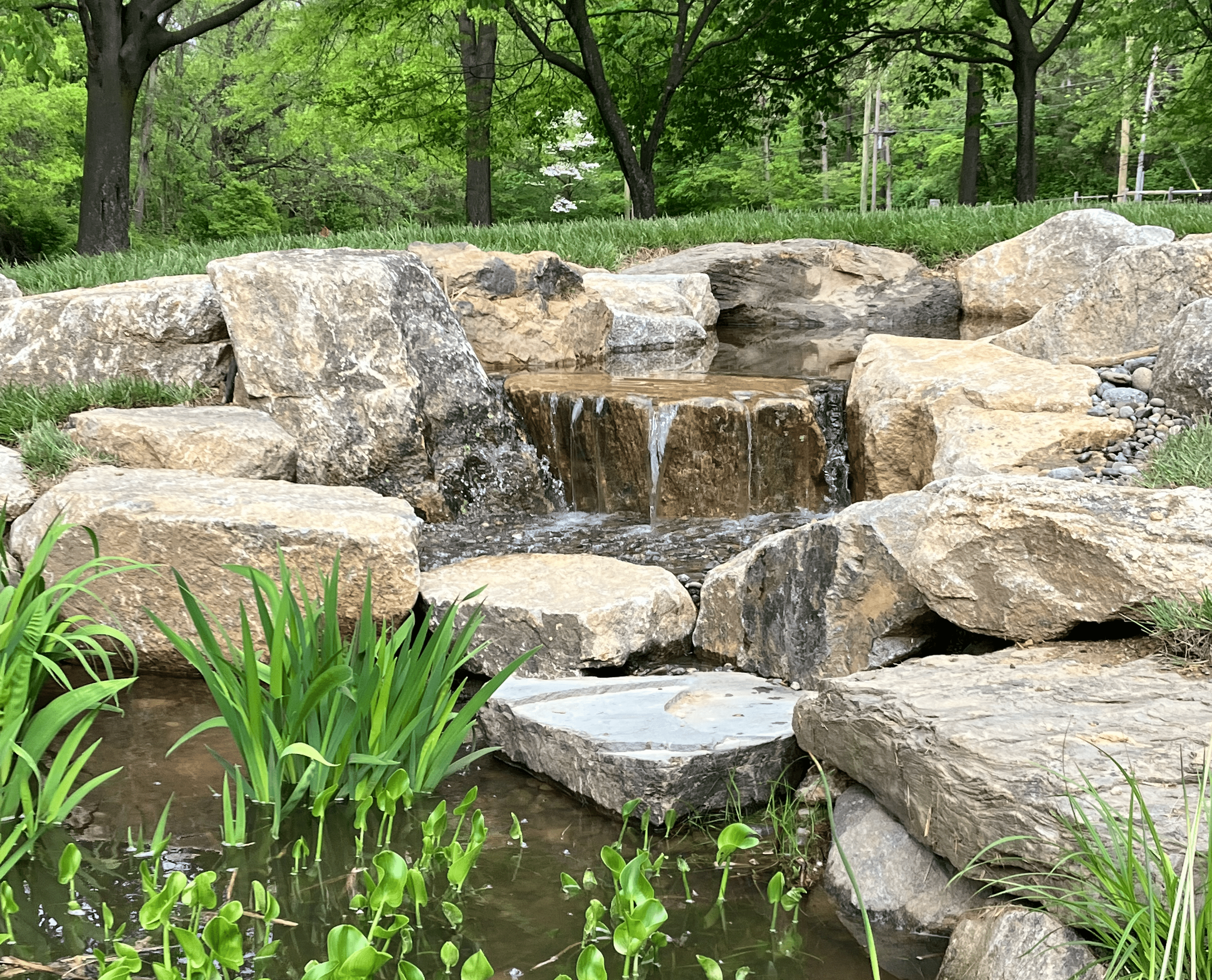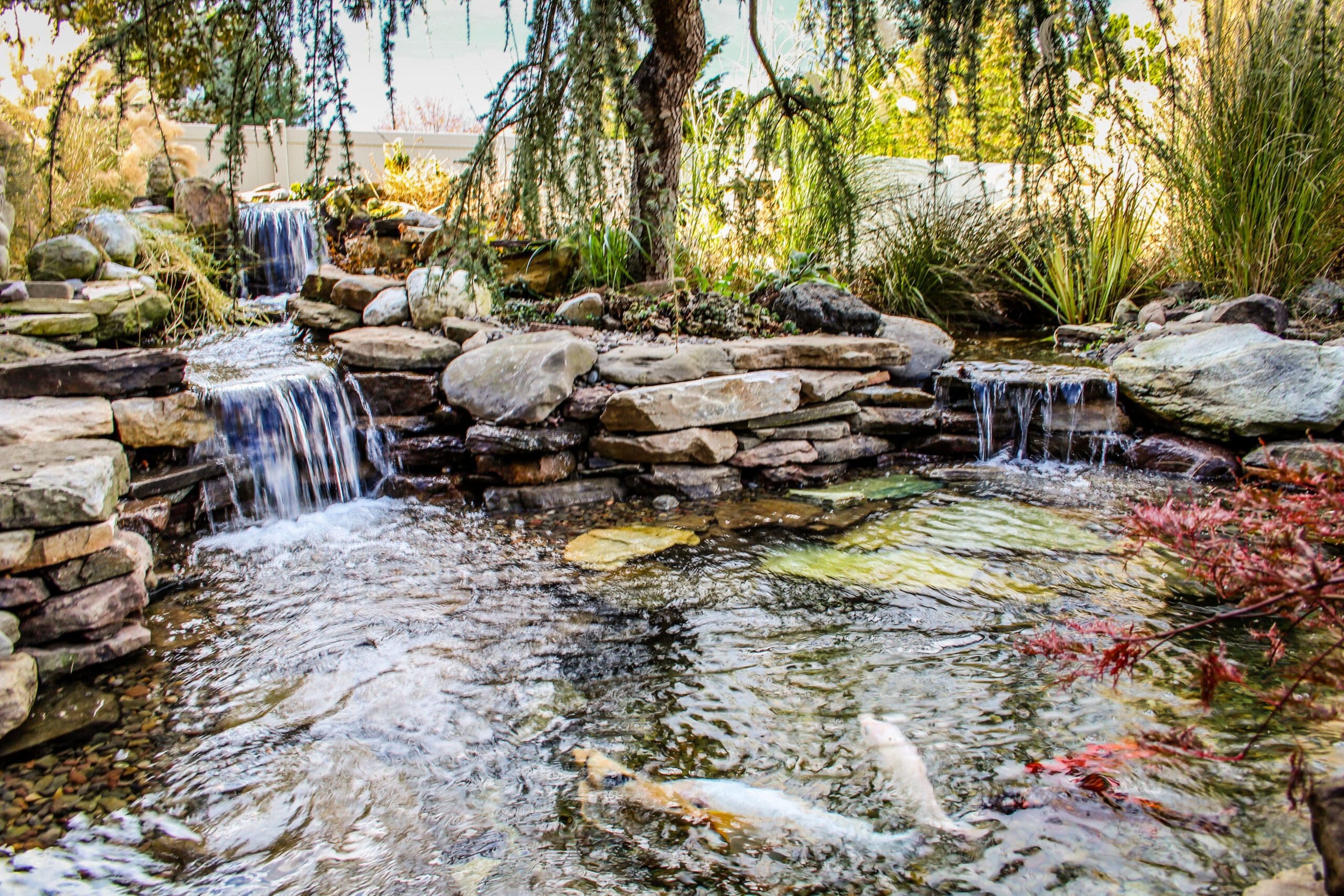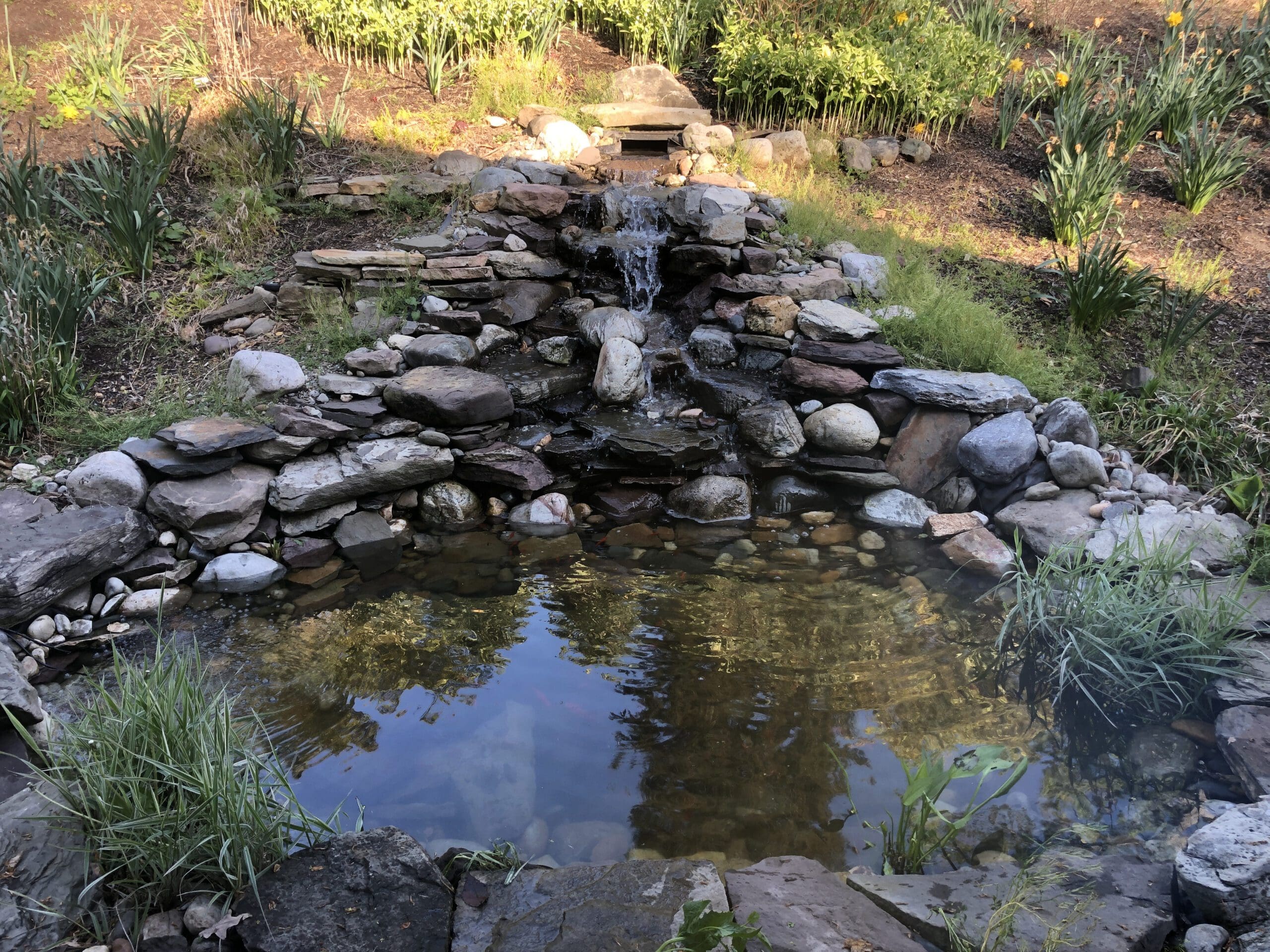Adding a water feature to your New Jersey garden is a fantastic way to enhance its beauty and tranquility. However, choosing between a pondless waterfall and an ecosystem pond can be a bit challenging. Each option offers distinct advantages and caters to different preferences and needs. Pondless waterfalls are perfect for those who desire the soothing sound of water with minimal maintenance, while ecosystem ponds create a lively, self-sustaining habitat that supports a variety of aquatic life. Let’s explore both options to help you make an informed decision for your garden.
What Exactly is a Pondless Waterfall?
Imagine a waterfall without a pond. Sounds interesting, right? A pondless waterfall consists of water flowing down rocks or other structures, then disappearing into a hidden underground reservoir. From there, the water is pumped back to the top to recirculate, creating a continuous, soothing flow. This design offers the tranquil sound and aesthetic appeal of a waterfall without the complexity of maintaining a pond.
The hidden reservoir is typically covered with decorative gravel, which allows water to percolate down to the storage area while keeping the surface dry and safe. The recirculating pump is housed within this reservoir, ensuring the system runs efficiently with minimal maintenance.
Why You’ll Love Pondless Waterfalls:
- Safe and Space-Efficient: With no standing water, pondless waterfalls are a safer option for families with young children and pets. They are also a great solution for smaller gardens where space is at a premium.
- Minimal Upkeep: One of the biggest draws of a pondless waterfall is its low maintenance. Without a pond to clean or fish to care for, you can enjoy the soothing sounds of running water with very little effort.
- Water-Efficient: Thanks to their recirculating system, pondless waterfalls use less water, making them an environmentally friendly choice. This is particularly beneficial during dry seasons or in areas with water restrictions.
- Design Flexibility: Pondless waterfalls offer a lot of creative freedom. You can design them to fit various garden styles, from natural and rustic to sleek and modern.
- Year-Round Appeal: These features can be enjoyed in all seasons, without the worry of pond maintenance in winter. The running water can create beautiful ice formations in winter, adding to your garden’s visual interest.
Ecosystem Ponds: Nature’s Playground
What Exactly is an Ecosystem Pond?
Think of it as your mini-natural habitat. An ecosystem pond is a self-sustaining pond designed to support a wide variety of aquatic life, including fish, plants, and beneficial bacteria. This type of pond mimics a natural ecosystem where all components work together to maintain balance and health.
In an ecosystem pond, you’ll find a harmonious blend of elements. Fish play a crucial role by providing nutrients through their waste, which supports plant growth. The plants, in turn, help oxygenate the water and provide habitat for the fish. Beneficial bacteria break down organic matter and help keep the water clear. This intricate web of life creates a balanced environment where each element supports the others, resulting in a thriving aquatic ecosystem.
Why You’ll Love Ecosystem Ponds:
- Rich Biodiversity: Ecosystem ponds attract a variety of wildlife, from birds and butterflies to frogs and fish. This can turn your garden into a lively and dynamic environment.
- Naturally Beautiful: There’s something inherently calming and beautiful about a pond teeming with life. An ecosystem pond can serve as a stunning focal point in your garden, offering a serene and picturesque landscape feature.
- Interactive Experience: If you enjoy hands-on gardening, an ecosystem pond is perfect. You can feed the fish, plant and care for aquatic plants, and generally interact with the pond to ensure it thrives.
- Educational Opportunities: Ecosystem ponds offer great learning opportunities, especially for children. They can learn about different species, ecosystems, and the importance of biodiversity in a fun and engaging way.
- Environmental Benefits: These ponds support local plants, enhancing the natural environment. They can also help manage stormwater runoff, reducing the risk of flooding.
- Relaxing Atmosphere: The presence of water and wildlife can create a serene and calming environment, providing a perfect spot for relaxation and meditation.
Deciding Factors
Maintenance: Not a fan of regular upkeep? Go for the pondless waterfall. Love the idea of a vibrant, living pond? The ecosystem pond is your best bet. Pondless waterfalls require minimal effort to keep running, while ecosystem ponds need regular attention to maintain the health of the aquatic life and water quality.
Space and Safety: Small garden or worried about safety? Pondless waterfalls are compact and safe. Got space and love a lively garden? An ecosystem pond is perfect. Consider the available space in your garden and any safety concerns, especially if you have young children or pets.
Engagement and Aesthetics: Do you enjoy interacting with nature? Ecosystem ponds offer more engagement. Prefer a hassle-free, decorative feature? Pondless waterfalls are ideal. Think about how much you value interacting with a living ecosystem versus having a decorative water feature that requires less effort.
Wrapping Up
Your choice hinges on your lifestyle, space, and how much maintenance you’re up for. Both options will elevate your outdoor space beautifully. Whether you choose the simplicity and safety of a pondless waterfall or the vibrant, engaging nature of an ecosystem pond, you’ll be enhancing your garden in a significant way.
For expert advice and installation, contact AquaReale at 215-880-6811. Let’s transform your garden into a serene oasis today!
FAQs:
1. What is the main difference between a pondless waterfall and an ecosystem pond? A pondless waterfall recirculates water through a hidden reservoir without a standing body of water, while an ecosystem pond is a complete habitat that supports fish, plants, and other aquatic life in a natural pond setting. The former focuses on aesthetic appeal and minimal maintenance, whereas the latter creates a living, self-sustaining environment that requires more care.
2. Which water feature requires less maintenance? Pondless waterfalls generally require less maintenance as they lack a pond that needs cleaning and do not support aquatic life that requires care. In contrast, ecosystem ponds require regular upkeep to maintain water quality and the health of the plants and fish. This includes monitoring water conditions, feeding fish, and managing plant growth.
3. Are pondless waterfalls safe for children and pets? Yes, pondless waterfalls are safer for children and pets because there is no exposed water. The water flows into a hidden reservoir, minimizing the risk of accidental falls or drownings. This makes them an ideal choice for families looking for a beautiful yet secure water feature.
4. Can ecosystem ponds support fish and plants? Absolutely, ecosystem ponds are designed to support a variety of aquatic life, including fish and plants. They create a balanced, self-sustaining environment where fish, plants, and beneficial bacteria work together to maintain water quality and ecosystem health. This makes them vibrant and dynamic additions to any garden.
5. Which option is better for small gardens? Pondless waterfalls are typically better suited for small gardens due to their compact design. They provide the aesthetic and auditory benefits of running water without the space requirements of a full pond. If you have limited space but still want the tranquil sound of flowing water, a pondless waterfall is an excellent choice.






